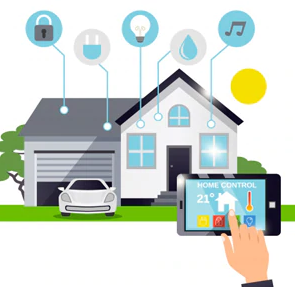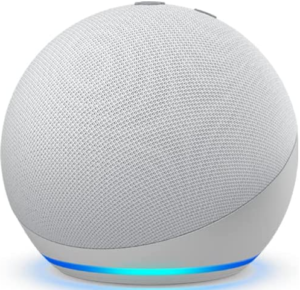
Getting Started with Home Automation
Home automation is the process of automating and controlling tasks within your home while you’re home or away. It has become mainstream for most home owners since available smart devices are easy to install and use. There are many unique ways to automate your home, and the type of automation you choose will depend on your needs and budget. Some people opt for simple, do-it-yourself solutions, while others prefer more comprehensive, professionally installed systems. Automation can include turning lights on and off, controlling appliances, monitoring energy usage, managing security systems, controlling the thermostat, or even learning your daily routine.
Home automation rose to popularity in the early 2000s as home networking, and broadband Internet became more widespread. This allowed for more sophisticated automation systems that could be controlled remotely using a laptop or smartphone. There are tons of ways to automate your home, so read further to see what you can do to start making your home smarter!
Disclaimer
ProteShea, LLC is a participant in the Amazon Services LLC Associates Program, an affiliate advertising program designed to provide a means for sites to earn advertising fees by advertising and linking to Amazon.com
Some links may be affiliate links, in which ProteShea, LLC earns a commission if you use that affiliate link. Please note that this is at no additional cost to you and helps us in creating more content.
Benefits
There are many benefits to automating your home, including:
Convenience: Home automation can make your life more convenient by allowing you to control devices and appliances with the press of a button. Most of them can be controlled via an app or a virtual assistant like Amazon Alexa or Google Home.
Energy efficiency: Automating your home can help you save energy by automatically turning off lights or appliances when they’re not in use.
Security: Home automation systems can include features like security cameras and motion sensors that can notify you of activity at your home even when you’re away.
Connection to the Internet
Before you start choosing which smart devices you want, you need to first ensure that you have an internet service established in your home through providers such as Spectrum, Xfinity, or CenturyLink. This depends on your area and options are limited. Each one typically provides a modem which connects you to the internet. Some providers require that a qualified technician come out to your home to install the modem while others allow you to install the modem yourself with step-by-step instructions. Next, all you need is a Wi-Fi router which provides a wireless network for your devices to connect to.
Smart Home Devices
There are a wealth of devices available for home automation. You can create automated processes within just about every aspect of your home, and there are varying degrees of installation difficulty with each type of home automation. Below, we have included a list of the top devices that you can augment with home automation and smart controls. Here are the top options you should consider buying and how difficult it is to integrate each of them.

Thermostat
Smart thermostats are one of the most popular devices for home automation, and for good reason. These can easily upgrade your comfort and energy efficiency, and some even learn your preferred temperature settings at certain times of the day. They know when you’re away and go into Eco mode which gives you the option to set the temperature so you’re not cooling or heating your home while nobody is home. Installing the thermostat is an easy DIY project that takes less than a hour with the app’s instructions.

Video Doorbell
Video doorbells are a great way to increase the security of your home. Through the app, you will know who is at your front door before they even ring the doorbell from anywhere in the world. You can even talk to them with the doorbell’s integrated microphone and speaker. For installation, you can use your existing doorbell wiring to power it or you can use a rechargeable battery. The install time should take less than 10 minutes and setup is a breeze through the app.

Speaker
Smart speakers such as the Amazon Echo, Google Nest, and Apple HomePod allow you to take full control of your home by being your voice assistant. Simply give it a voice command and it will perform what you want. You can tell it to turn on one of your smart lightbulbs, adjust your smart thermostat, play music, lock the front door, and countless of other tasks.

Camera
If you want complete piece of mind while you’re away, then adding a few smart indoor and outdoor cameras around your home is key. This is one of the top devices you can add for home security. Every camera has motion detection and can send you alerts so you can take action quickly. You can also use them to watch your pets, use it as a baby monitor, or manage your parcel deliveries.

Smoke Alarm
Another value added to your home is a smart smoke and carbon dioxide detector. If either of them are detected, it will notify you immediately via it’s integrated speaker or send you an alert to your phone. Some even let you perform a test of all your alarms and give you a full report once the test is complete.

Light Bulbs
Bring more color and fun to your home with smart bulbs which can be controlled via your voice assistant or phone app. You can control multiple bulbs while you’re home or away, or set timers if you don’t always remember to turn them off. In addition to changing the color, you can change the mode and temperature.

Smart Locks
This is a must-have if you’re never home and somebody needs to get in, especially if you’re a landlord. You can unlock the door right from your phone or they can enter the keycode and you’ll get notified. No need to hide your key under the mat or in your flower pot anymore.

Smart Plugs
This is one of my favorite smart devices since you can do so much with them. Anything that plugs into an electrical outlet can be turned on or off from your phone or with your voice assistant. You can set routines and schedules such as turning on the coffee pot in the morning, turning on a dehumidifier when the humidity gets too high, or turn on your holiday lights when the sun goes down.

Smart Garage Door Opener
The last one on our list is the smart garage door opener. This one can supplement your smart lock if you don’t want to let someone through your front door and have access to the whole house. These are great for letting the delivery driver drop off a package, or letting in a technician to service your water heater, electrical panel, or A/C unit.
Conclusion
If you are interested in getting started with home automation, now is the time. There is a wealth of smart home devices that you can use to get started quickly and lay down the basis for your network. Once you choose a hub and start linking devices through your smartphone, you’ll be surprised at how much you can do to simplify your life by setting up simple routines and schedules.
Making your home smarter is well worth it for improved efficiency, security, and comfort! Plus, it’s a ton of fun to control your home right from your phone or with your voice assistant.
About Author
Eric Shea is the founder of ProteShea and is an electrical engineer. He wishes to have a major impact on bridging the gap between engineering theory and real-world applications. He has worked at Kratos Defense, SpaceX, Air Force Research Laboratory, and Polaris Industries. He received a M.S. in electrical engineering from the University of Pittsburgh and a B.S. in electrical engineering from the University of Florida.
Categories
- Arduino (24)
- Artificial Intelligence (1)
- Guides (19)
- Home Automation (2)
- Off Grid Solar System (1)
- Raspberry Pi (2)
- Tips, Tricks, and Techniques (32)
- Uncategorized (2)